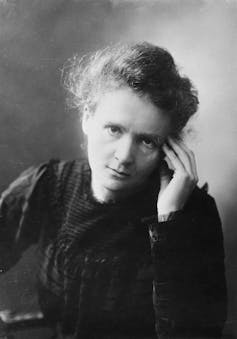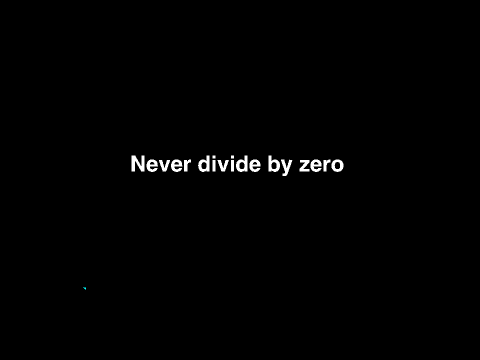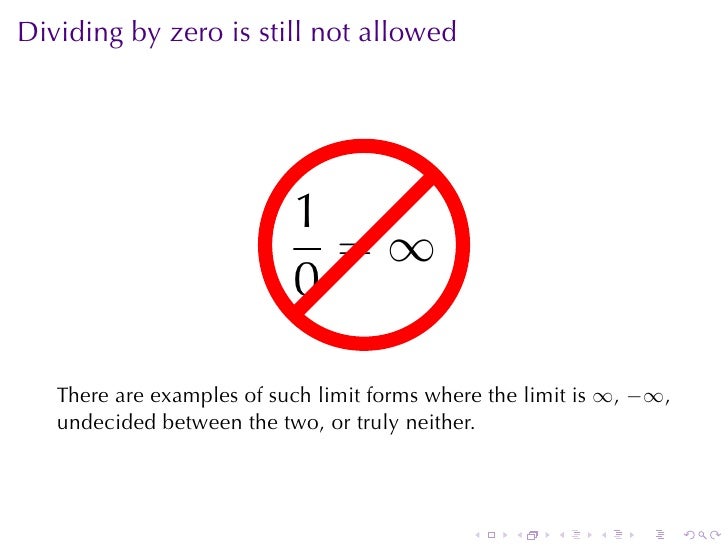Neurosciences : comment pensent les anticonformistes ?
Que se passe-t-il dans le cerveau d’un homme qui choisit de s’affranchir de l’opinion commune ? Les neurosciences s’intéressent depuis de nombreuses années aux personnalités anticonformistes. L’enjeu est important, car ces individus permettent de faire évoluer la société et avancer la science.
Parmi les chercheurs, ils sont peu nombreux à remettre en cause les dogmes et à prendre le risque d’être attaqués, voire marginalisés par leurs pairs. L’histoire est riche, pourtant, de ces scientifiques qui, comme Albert Einstein ou Marie Curie, sont sortis des clous et ont révolutionné leur discipline.
La sélection naturelle semble privilégier le conformisme chez les individus. En même temps, l’évolution préserve une minorité aux idées hors normes, dont la créativité pourrait bien conditionner, ni plus ni moins, la survie de l’espèce. Le mathématicien Cédric Villani et l’ingénieure Thanh Nghiem appellent à valoriser ces individus atypiques. Ils estiment que ceux qu’ils ont rebaptisés les « crapauds fous » sont les plus à même d’inventer de nouveaux modèles dans un monde secoué par le changement climatique, le bouleversement numérique et le terrorisme.
Dix années de combat solitaire pour le spécialiste de la maladie de Lyme
L’anticonformisme existe à toutes les époques. Parmi les chercheurs d’aujourd’hui, on voit se dessiner des profils dont les idées suscitent des réactions de rejet chez leurs confrères. Notamment dans des domaines polémiques comme celui de la maladie de Lyme, infection de plus en plus fréquente transmise par les tiques. Un scientifique solide comme Christian Perronne, spécialiste des maladies infectieuses et tropicales, se retrouve par exemple sous le feu des critiques parce qu’il réclame la reconnaissance d’une forme chronique de la maladie.
Pendant une dizaine d’années, ce professeur à l’université de Versailles-St Quentin en Yvelines a mené un combat solitaire, dénonçant l’abandon dans lequel se trouvaient les personnes souffrant d’une maladie de Lyme non soignée. Les douleurs dont elles se plaignaient n’étaient pas prises en considération et leur valaient des diagnostics psychiatriques.
À l’automne 2016, l’annonce par le gouvernement d’un plan de lutte contre la maladie de Lyme est venu confirmer les positions de cet iconoclaste. Dans son livre publié six mois plus tard, La vérité sur la maladie de Lyme (Odile Jacob), Christian Peronne détaille les études montrant qu’un traitement antibiotique prolongé améliore nettement la qualité de vie des patients. Le cas de ce chercheur montre comment la société tire finalement bénéfice des personnalités anticonformistes.
Le destin hors norme de Marie Curie
L’histoire a retenu des destins hors normes comme celui de Marie Curie, lauréate des prix Nobel de physique et de chimie. Née en Pologne, elle débute sa carrière en France, les études supérieures étant interdites aux femmes dans son pays d’origine. En 1906, elle devient la première femme professeur ; mais sa nomination à l’Académie des sciences lui sera refusée à cause d’un jury conservatiste et anti-féministe.

Son éloge de l’anticonformisme, cité dans le livre Madame Curie (Da Capo Series in Science), mérite d’être relu aujourd’hui : « Nous ne devrions pas laisser croire que tout progrès scientifique peut être réduit à des mécanismes, des machines, des rouages, quand bien même de tels mécanismes ont eux aussi leur beauté. Je ne crois pas non plus que l’esprit d’aventure risque de disparaître dans notre monde. Si je vois quelque chose de vital autour de moi, c’est précisément cet esprit d’aventure, qui me paraît indéracinable et s’apparente à la curiosité. Sans la curiosité de l’esprit, que serions-nous ? Telle est bien la beauté et la noblesse de la science : désir sans fin de repousser les frontières du savoir, de traquer les secrets de la matière et de la vie sans idée préconçue des conséquences éventuelles. »
Le cas Albert Einstein
Célèbre pour sa théorie de la relativité, Albert Einstein incarne l’anticonformisme, bien au-delà de son époque. Né en Allemagne en 1879, Albert Einstein se confronte dès le début de sa scolarité à ses professeurs dont il conteste l’autorité. Considéré comme un mauvais élève, à cause de ses difficultés à s’exprimer et à s’adapter au système scolaire, il subit de nombreux échecs. Renvoyé du collège de Munich, il est non bachelier et échoue à l’examen d’entrée à l’école Polytechnique fédérale de Zurich. Toutefois, il se distingue par d’excellentes capacités en mathématiques, reconnues par des mathématiciens et physiciens de renom.

Le destin d’Albert Einstein suscite de nombreuses questions chez les neurobiologistes cherchant à élucider les mystères de l’intelligence. Une équipe de chercheurs canadiens a ainsi étudié des photographies de l’autopsie de son cerveau et les a comparées à celles d’un cerveau « banal ». Leur étude, parue dans la revue The Lancet en 1999, a révélé des connexions anormalement nombreuses entre les deux hémisphères. Le cerveau d’Albert Einstein présente également des circonvolutions anormales. Il s’agit de deux caractéristiques observées dans le spectre de l’autisme, suggérant que le prix Nobel aurait pu y appartenir.
Les difficultés d’expression d’Albert Einstein pendant l’enfance sont un autre indice allant dans ce sens. Des scientifiques comme le professeur britannique de mathématiques Ioan James, dans son article sur les « scientifiques singuliers », ou le professeur irlandais de pédopsychiatrie Michael Fitzgerald, dans son article « Einstein, cerveau et comportement », considèrent qu’il aurait pu être concerné par le syndrome d’Asperger, forme d’autisme associant des capacités intellectuelles normales, voire supérieures, et des déficits dans la sociabilité. Ainsi, le non-conformisme de certaines personnalités pourrait, peut-être, s’expliquer par un syndrome d’Asperger.
De quoi est fait le conformisme
De nombreuses études ont été menées ces dernières années sur « l’influence sociale », pour savoir de quoi est fait le conformisme. Chez l’homme, il a été démontré que ce conformisme dépend notamment de l’attitude adoptée par l’individu vis-à-vis des « informations sociales », par exemple un échange d’opinion avec un autre individu. Une expérience menée par une équipe britannique de l’Université de St Andrews, publiée en 2012, en atteste. Différents objets comme un cube, une boule ou un cône, étaient présentés aux sujets de l’étude sous des angles différents, ce qui les rendait difficiles à reconnaître. Ces personnes devaient dire si, d’après elles, ces objets avaient ou non la même forme et conclure : oui, ou non, il s’agit du même objet.
Chacun des sujets montrait ensuite ses résultats à un autre groupe de participants. Ces derniers avaient passé plus tôt le même test et partageaient leurs propres résultats avec le sujet. Cet échange correspond à ce qu’on appelle de « l’information sociale ».
Puis chacun des sujets repassait le test de départ. Ce deuxième passage permettait de voir si ses réponses avaient changé, donc de mesurer à quel point l’information sociale l’avait influencé. Cette expérience a montré que davantage de sujets se rangeaient à la décision de la majorité quand deux conditions étaient remplies : quand le groupe donnant ses avis était nombreux (12 personnes), et que les sujets étaient incertains dans leurs propres choix.
Des IRM du cerveau pour les anticonformistes
L’anatomie du cerveau chez des individus anticonformistes a pu être étudiée par une équipe internationale en 2012. Grâce à une analyse d’IRM fonctionnelle de leur cerveau, ces chercheurs ont montré que chez eux, la matière grise du cortex orbito-frontal latéral est moins importante que chez des individus conformistes. Cette région, située à l’arrière des yeux, contrôle le comportement social et la prise de décision.
Les mêmes chercheurs britanniques cités plus haut ont passé en revue les études réalisées sur les bases biologiques du conformisme, dans un article publié en 2012. De l’ensemble de ces travaux, ils concluent que le conformisme aurait contribué, au cours de l’évolution, au développement d’adaptations cognitives spécifiques pour faciliter l’apprentissage social chez l’Homme. Autrement dit, que le cerveau de l’Homme s’est adapté pour lui permettre d’apprendre de ses congénères.
Ainsi, il semblerait que la sélection naturelle ait fait son choix en favorisant le conformisme, sans pour autant renier les individus hors normes. Ces derniers apparaissent davantage capables de s’adapter à des situations inhabituelles. La diversité des types de cerveaux, ou neurodiversité, permettrait ainsi la survie de l’espèce. C’est l’hypothèse sur laquelle repose, aussi, la « théorie du crapaud fou », défendue par le mouvement du même nom lancé à l’automne 2017 par 34 scientifiques et autres personnalités inclassables. « Le changement commence toujours par les quelques pour cent qu’on traite de fous au départ », écrivent-ils sur leur site.
L’initiative vise à identifier les anticonformistes dans notre société et à les encourager à prendre la parole. Elle emprunte son argumentation à l’étude des animaux : « Les crapauds vivent dans une zone et se reproduisent dans d’autres. Chaque année, de manière grégaire, tous migrent dans le même sens. Lorsque nous construisons de nouvelles routes en travers, ils se font massivement écraser. Sauf que… quelques-uns vont dans l’autre sens, ou trouvent les tunnels que des écologistes font creuser pour eux sous les routes. Parce qu’ils s’aventurent dans des directions non conventionnelles, ces crapauds fous inventent des voies d’avenir et sauvent l’espèce ».
Pour en revenir à la communauté scientifique, le caractère anticonformiste ne semble pas apporter aux individus une situation confortable. L’absence de reconnaissance par les pairs peut même mener à l’arrêt des recherches, par manque de financement. L’histoire des sciences montre pourtant l’importance des anticonformistes pour le progrès des connaissances. Qu’en aurait-il été si de grands chercheurs comme Marie Curie ou Albert Eistein n’avaient pas persisté dans leurs travaux ? On peut espérer que les neurosciences nous viennent en aide pour mieux repérer de tels individus et, à terme, stimuler le progrès scientifique.https://theconversation.com/neurosciences-comment-pensent-les-anticonformistes-89948
とても興味深く読みました:
\documentclass[12pt]{article}
\usepackage{latexsym,amsmath,amssymb,amsfonts,amstext,amsthm}
\numberwithin{equation}{section}
\begin{document}
\title{\bf Announcement 412: The 4th birthday of the division by zero $z/0=0$ \\
(2018.2.2)}
\author{{\it Institute of Reproducing Kernels}\\
Kawauchi-cho, 5-1648-16,\\
Kiryu 376-0041, Japan\\
}
\date{\today}
\maketitle
The Institute of Reproducing Kernels is dealing with the theory of division by zero calculus and declares that the division by zero was discovered as $0/0=1/0=z/0=0$ in a natural sense on 2014.2.2. The result shows a new basic idea on the universe and space since Aristotelēs (BC384 - BC322) and Euclid (BC 3 Century - ), and the division by zero is since Brahmagupta (598 - 668 ?).
In particular, Brahmagupta defined as $0/0=0$ in Brāhmasphuṭasiddhānta (628), however, our world history stated that his definition $0/0=0$ is wrong over 1300 years, but, we showed that his definition is suitable.
For the details, see the references and the site: http://okmr.yamatoblog.net/
We wrote a global book manuscript \cite{s18} with 154 pages
and stated in the preface and last section of the manuscript as follows:
\bigskip
{\bf Preface}
\medskip
The division by zero has a long and mysterious story over the world (see, for example, H. G. Romig \cite{romig} and Google site with the division by zero) with its physical viewpoints since the document of zero in India on AD 628. In particular, note that Brahmagupta (598 -668 ?) established the four arithmetic operations by introducing $0$ and at the same time he defined as $0/0=0$ in
Brhmasphuasiddhnta. Our world history, however, stated that his definition $0/0=0$ is wrong over 1300 years, but, we will see that his definition is right and suitable.
The division by zero $1/0=0/0=z/0$ itself will be quite clear and trivial with several natural extensions of the fractions against the mysterously long history, as we can see from the concepts of the Moore-Penrose generalized inverses or the Tikhonov regularization method to the fundamental equation $az=b$, whose solution leads to the definition $z =b/a$.
However, the result (definition) will show that
for the elementary mapping
\begin{equation}
W = \frac{1}{z},
\end{equation}
the image of $z=0$ is $W=0$ ({\bf should be defined from the form}). This fact seems to be a curious one in connection with our well-established popular image for the point at infinity on the Riemann sphere (\cite{ahlfors}). �As the representation of the point at infinity of the Riemann sphere by the
zero $z = 0$, we will see some delicate relations between $0$ and $\infty$ which show a strong
discontinuity at the point of infinity on the Riemann sphere. We did not consider any value of the elementary function $W =1/ z $ at the origin $z = 0$, because we did not consider the division by zero
$1/ 0$ in a good way. Many and many people consider its value by the limiting like $+\infty $ and $- \infty$ or the
point at infinity as $\infty$. However, their basic idea comes from {\bf continuity} with the common sense or
based on the basic idea of Aristotle. --
For the related Greece philosophy, see \cite{a,b,c}. However, as the division by zero we will consider its value of
the function $W =1 /z$ as zero at $z = 0$. We will see that this new definition is valid widely in
mathematics and mathematical sciences, see (\cite{mos,osm}) for example. Therefore, the division by zero will give great impacts to calculus, Euclidean geometry, analytic geometry, differential equations, complex analysis in the undergraduate level and to our basic ideas for the space and universe.
We have to arrange globally our modern mathematics in our undergraduate level. Our common sense on the division by zero will be wrong, with our basic idea on the space and the universe since Aristotle and Euclid. We would like to show clearly these facts in this book. The content is in the undergraduate level.
\bigskip
\bigskip
{\bf Conclusion}
\medskip
Apparently, the common sense on the division by zero with a long and mysterious history is wrong and our basic idea on the space around the point at infinity is also wrong since Euclid. On the gradient or on derivatives we have a great missing since $\tan (\pi/2) = 0$. Our mathematics is also wrong in elementary mathematics on the division by zero.
This book is an elementary mathematics on our division by zero as the first publication of books for the topics. The contents have wide connections to various fields beyond mathematics. The author expects the readers write some philosophy, papers and essays on the division by zero from this simple source book.
The division by zero theory may be developed and expanded greatly as in the author's conjecture whose break theory was recently given surprisingly and deeply by Professor Qi'an Guan \cite{guan} since 30 years proposed in \cite{s88} (the original is in \cite {s79}).
We have to arrange globally our modern mathematics with our division by zero in our undergraduate level.
We have to change our basic ideas for our space and world.
We have to change globally our textbooks and scientific books on the division by zero.
\bibliographystyle{plain}
\begin{thebibliography}{10}
\bibitem{ahlfors}
L. V. Ahlfors, Complex Analysis, McGraw-Hill Book Company, 1966.
\bibitem{cs}
L. P. Castro and S. Saitoh, Fractional functions and their representations, Complex Anal. Oper. Theory {\bf7} (2013), no. 4, 1049-1063.
\bibitem{guan}
Q. Guan, A proof of Saitoh's conjecture for conjugate Hardy H2 kernels, arXiv:1712.04207.
\bibitem{kmsy}
M. Kuroda, H. Michiwaki, S. Saitoh, and M. Yamane,
New meanings of the division by zero and interpretations on $100/0=0$ and on $0/0=0$,
Int. J. Appl. Math. {\bf 27} (2014), no 2, pp. 191-198, DOI: 10.12732/ijam.v27i2.9.
\bibitem{ms16}
T. Matsuura and S. Saitoh,
Matrices and division by zero z/0=0,
Advances in Linear Algebra \& Matrix Theory, {\bf 6}(2016), 51-58
Published Online June 2016 in SciRes. http://www.scirp.org/journal/alamt
\\ http://dx.doi.org/10.4236/alamt.2016.62007.
\bibitem{ms18}
T. Matsuura and S. Saitoh,
Division by zero calculus and singular integrals. (Submitted for publication)
\bibitem{mms18}
T. Matsuura, H. Michiwaki and S. Saitoh,
$\log 0= \log \infty =0$ and applications. Differential and Difference Equations with Applications. Springer Proceedings in Mathematics \& Statistics.
\bibitem{msy}
H. Michiwaki, S. Saitoh and M.Yamada,
Reality of the division by zero $z/0=0$. IJAPM International J. of Applied Physics and Math. {\bf 6}(2015), 1--8. http://www.ijapm.org/show-63-504-1.html
\bibitem{mos}
H. Michiwaki, H. Okumura and S. Saitoh,
Division by Zero $z/0 = 0$ in Euclidean Spaces,
International Journal of Mathematics and Computation, {\bf 2}8(2017); Issue 1, 2017), 1-16.
\bibitem{osm}
H. Okumura, S. Saitoh and T. Matsuura, Relations of $0$ and $\infty$,
Journal of Technology and Social Science (JTSS), {\bf 1}(2017), 70-77.
\bibitem{os}
H. Okumura and S. Saitoh, The Descartes circles theorem and division by zero calculus. https://arxiv.org/abs/1711.04961 (2017.11.14).
\bibitem{o}
H. Okumura, Wasan geometry with the division by 0. https://arxiv.org/abs/1711.06947 International Journal of Geometry.
\bibitem{os18}
H. Okumura and S. Saitoh,
Applications of the division by zero calculus to Wasan geometry.
(Submitted for publication).
\bibitem{ps18}
S. Pinelas and S. Saitoh,
Division by zero calculus and differential equations. Differential and Difference Equations with Applications. Springer Proceedings in Mathematics \& Statistics.
\bibitem{romig}
H. G. Romig, Discussions: Early History of Division by Zero,
American Mathematical Monthly, Vol. {\bf 3}1, No. 8. (Oct., 1924), pp. 387-389.
\bibitem{s79}
S. Saitoh, The Bergman norm and the Szeg$\ddot{o}$ norm, Trans. Amer. Math. Soc. {\bf 249} (1979), no. 2, 261--279.
\bibitem{s88}
S. Saitoh, Theory of reproducing kernels and its applications. Pitman Research Notes in Mathematics Series, {\bf 189}. Longman Scientific \& Technical, Harlow; copublished in the United States with John Wiley \& Sons, Inc., New York, 1988. x+157 pp. ISBN: 0-582-03564-3
\bibitem{s14}
S. Saitoh, Generalized inversions of Hadamard and tensor products for matrices, Advances in Linear Algebra \& Matrix Theory. {\bf 4} (2014), no. 2, 87--95. http://www.scirp.org/journal/ALAMT/
\bibitem{s16}
S. Saitoh, A reproducing kernel theory with some general applications,
Qian,T./Rodino,L.(eds.): Mathematical Analysis, Probability and Applications - Plenary Lectures: Isaac 2015, Macau, China, Springer Proceedings in Mathematics and Statistics, {\bf 177}(2016), 151-182. (Springer) .
\bibitem{s17}
S. Saitoh, Mysterious Properties of the Point at Infinity、
arXiv:1712.09467 [math.GM](2017.12.17).
\bibitem{s18}
S. Saitoh, Division by zero calculus (154 pages: draft): (http://okmr.yamatoblog.net/)
\bibitem{ttk}
S.-E. Takahasi, M. Tsukada and Y. Kobayashi, Classification of continuous fractional binary operations on the real and complex fields, Tokyo Journal of Mathematics, {\bf 38}(2015), no. 2, 369-380.
\bibitem{a}
https://philosophy.kent.edu/OPA2/sites/default/files/012001.pdf
\bibitem{b}
http://publish.uwo.ca/~jbell/The 20Continuous.pdf
\bibitem{c}
http://www.mathpages.com/home/kmath526/kmath526.htm
\bibitem{ann179}
Announcement 179 (2014.8.30): Division by zero is clear as z/0=0 and it is fundamental in mathematics.
\bibitem{ann185}
Announcement 185 (2014.10.22): The importance of the division by zero $z/0=0$.
\bibitem{ann237}
Announcement 237 (2015.6.18): A reality of the division by zero $z/0=0$ by geometrical optics.
\bibitem{ann246}
Announcement 246 (2015.9.17): An interpretation of the division by zero $1/0=0$ by the gradients of lines.
\bibitem{ann247}
Announcement 247 (2015.9.22): The gradient of y-axis is zero and $\tan (\pi/2) =0$ by the division by zero $1/0=0$.
\bibitem{ann250}
Announcement 250 (2015.10.20): What are numbers? - the Yamada field containing the division by zero $z/0=0$.
\bibitem{ann252}
Announcement 252 (2015.11.1): Circles and
curvature - an interpretation by Mr.
Hiroshi Michiwaki of the division by
zero $r/0 = 0$.
\bibitem{ann281}
Announcement 281 (2016.2.1): The importance of the division by zero $z/0=0$.
\bibitem{ann282}
Announcement 282 (2016.2.2): The Division by Zero $z/0=0$ on the Second Birthday.
\bibitem{ann293}
Announcement 293 (2016.3.27): Parallel lines on the Euclidean plane from the viewpoint of division by zero 1/0=0.
\bibitem{ann300}
Announcement 300 (2016.05.22): New challenges on the division by zero z/0=0.
\bibitem{ann326}
Announcement 326 (2016.10.17): The division by zero z/0=0 - its impact to human beings through education and research.
\bibitem{ann352}
Announcement 352(2017.2.2): On the third birthday of the division by zero z/0=0.
\bibitem{ann354}
Announcement 354(2017.2.8): What are $n = 2,1,0$ regular polygons inscribed in a disc? -- relations of $0$ and infinity.
\bibitem{362}
Announcement 362(2017.5.5): Discovery of the division by zero as $0/0=1/0=z/0=0$
\bibitem{380}
Announcement 380 (2017.8.21): What is the zero?
\bibitem{388}
Announcement 388(2017.10.29): Information and ideas on zero and division by zero (a project).
\bibitem{409}
Announcement 409 (2018.1.29.): Various Publication Projects on the Division by Zero.
\bibitem{410}
Announcement 410 (2018.1 30.): What is mathematics? -- beyond logic; for great challengers on the division by zero.
\end{thebibliography}
\end{document}
List of division by zero:
\bibitem{os18}
H. Okumura and S. Saitoh,
Remarks for The Twin Circles of Archimedes in a Skewed Arbelos by H. Okumura and M. Watanabe, Forum Geometricorum.
Saburou Saitoh, Mysterious Properties of the Point at Infinity、
arXiv:1712.09467 [math.GM]
arXiv:1712.09467 [math.GM]
Hiroshi Okumura and Saburou Saitoh
The Descartes circles theorem and division by zero calculus. 2017.11.14
L. P. Castro and S. Saitoh, Fractional functions and their representations, Complex Anal. Oper. Theory {\bf7} (2013), no. 4, 1049-1063.
M. Kuroda, H. Michiwaki, S. Saitoh, and M. Yamane,
New meanings of the division by zero and interpretations on $100/0=0$ and on $0/0=0$, Int. J. Appl. Math. {\bf 27} (2014), no 2, pp. 191-198, DOI: 10.12732/ijam.v27i2.9.
T. Matsuura and S. Saitoh,
Matrices and division by zero z/0=0,
Advances in Linear Algebra \& Matrix Theory, 2016, 6, 51-58
Published Online June 2016 in SciRes. http://www.scirp.org/journal/alamt
\\ http://dx.doi.org/10.4236/alamt.2016.62007.
T. Matsuura and S. Saitoh,
Division by zero calculus and singular integrals. (Submitted for publication).
T. Matsuura, H. Michiwaki and S. Saitoh,
$\log 0= \log \infty =0$ and applications. (Differential and Difference Equations with Applications. Springer Proceedings in Mathematics \& Statistics.)
H. Michiwaki, S. Saitoh and M.Yamada,
Reality of the division by zero $z/0=0$. IJAPM International J. of Applied Physics and Math. 6(2015), 1--8. http://www.ijapm.org/show-63-504-1.html
H. Michiwaki, H. Okumura and S. Saitoh,
Division by Zero $z/0 = 0$ in Euclidean Spaces,
International Journal of Mathematics and Computation, 28(2017); Issue 1, 2017), 1-16.
H. Okumura, S. Saitoh and T. Matsuura, Relations of $0$ and $\infty$,
Journal of Technology and Social Science (JTSS), 1(2017), 70-77.
S. Pinelas and S. Saitoh,
Division by zero calculus and differential equations. (Differential and Difference Equations with Applications. Springer Proceedings in Mathematics \& Statistics).
S. Saitoh, Generalized inversions of Hadamard and tensor products for matrices, Advances in Linear Algebra \& Matrix Theory. {\bf 4} (2014), no. 2, 87--95. http://www.scirp.org/journal/ALAMT/
S. Saitoh, A reproducing kernel theory with some general applications,


























0 件のコメント:
コメントを投稿